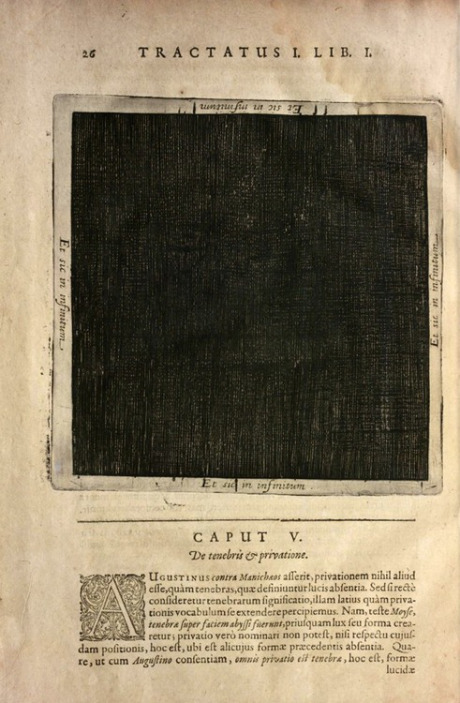Posts Tagged ‘comics’
An interview with Julia Gfrörer: ‘I don’t think that I could make like a nice book if I wanted to’
May 30, 2025Are there any self-imposed taboos in your work, like rules that you won’t break?
Yes, there definitely are. Probably a lot of them are not things that I’m immediately conscious of. I won’t put a beautiful girl on the cover of my book, just because I find it boring and kind of pandering, and also obviously kind of misogynist. I guess I don’t really like to put people on the covers of my books at all.
I’m very careful about the way that I depict violence, domestic violence, sexual violence, things like that. I think it’s important to show, and I won’t hide them. There can be a tendency to think it’s fine to show these things as long as you do it properly in a way that it telegraphs your true intentions, so you have to have a disclaimer on every page that says, well, this character is stomping on a duckling, but I would never stomp on a duckling.
I try to show things like that with as little judgment as possible, because when you encounter those things in real life, they don’t usually come with a disclaimer. And usually when violence suddenly appears in your otherwise violence-free day-to-day life, it is difficult to know how you are supposed to feel about it. So I don’t want to give the reader any help in that regard.
I also won’t show things that I can’t stomach. So if there’s a certain type of violence that I show, like, for example, I don’t know if I’ve ever shown somebody being burned alive. I think probably not. But if I were to show that, I would do my best to read firsthand accounts of that type of death, people who have come close to it, people have witnessed it, or maybe even watch videos of it if they exist. I mean, to my way of thinking, it’s the least that I can do.
Like, to honor those who have been burned alive.
I guess it sounds kind of silly when you put it that way. I just don’t think that I have any right to use that as part of my story if I can’t face it. Does that make sense?
Well, you’re taking a lot of time to draw it, so that’s a sustained amount of time where you have to think about it.
Yeah, and that’s part of how I choose the things that I write about. I will purposely choose things that are difficult for me to think about. I really hate drawing close-ups of people screaming. I hate to look at them, but I do sometimes think they’re necessary. So I and make myself do it and I lean into the discomfort for my own sake to feel like I’ve earned it, maybe. It makes my entire process sound very masochistic. It’s like the comic is just a byproduct of my own need to just kind of swim around in the cesspit of human experience. That can’t be healthy.
And yet.
And yet. I mean, it’s more healthy than a lot of other ways that I could be chasing that feeling.
My brilliant friend Matthew Perpetua interviewed my brilliant wife Julia Gfrörer about her brilliant book World Within the World for the Comics Journal! If you’ve ever been curious about her stuff, this is the interview to read.
STC and World Within the World in the NYT
November 22, 2024My wife Julia Gfrörer’s forthcoming book World Within the World got a great review in the New York Times, which rules, and it mentions me and my contributions to the bok, which is an unexpected bonus. Go read! (Gift link!)
The Marvel Cinematic Universe Needs a ‘Barbie’ — and ‘Fantastic Four’ Can Deliver It
September 5, 2023The authorship of the Marvel Universe may remain an hotly debated question, though books by writers such as Tom Spurgeon, Sean Howe, and Josie Riesman have long supported the contention of Kirby and his heirs that he played a far larger role in the shared world’s creation and continuation than his erswhile collaborator Stan Lee — and the corporate hagiography recently served up by Marvel’s current owner, Disney — would ever admit. Yet even the movies that deal most directly in Kirby-heavy concepts, Thor and Black Panther and the Fourth World elements of DC’s so-called Snyderverse, look and feel little like the King’s comics. Indeed, years spent in the superhero comic trenches have taught me that many contemporary readers see Kirby’s cartooning as dated, even clumsy, compared to the genre’s current practitioners.
You know what else was seen as dated, even clumsy, compared to the techniques of current practitioners? Physical sets. Actual costumes. Establishing color and lighting on set rather than through post. Reviving an aesthetic associated with earlier times.
Barbie, in other words. Everything that Barbie did, it had to do while swimming upstream against a 15-year-old current of CGI slop, set loose by the establishment of the Marvel Cinematic Universe and the arrival of its many clones and knockoffs. I think it’s fair to say this has worked out for Barbie, no?
And it just so happens that the Marvel Cinematic Universe’s Phase Six is slated to kick off with a Jack Kirby co-created superhero team — the Jack Kirby co-created superhero team — called the Fantastic Four, with a film helmed by TV veteran Matt Shakman. At the risk of sounding like Kirby myself, do I need to draw you a picture here?
Hottest Chick in the Game
May 30, 2020
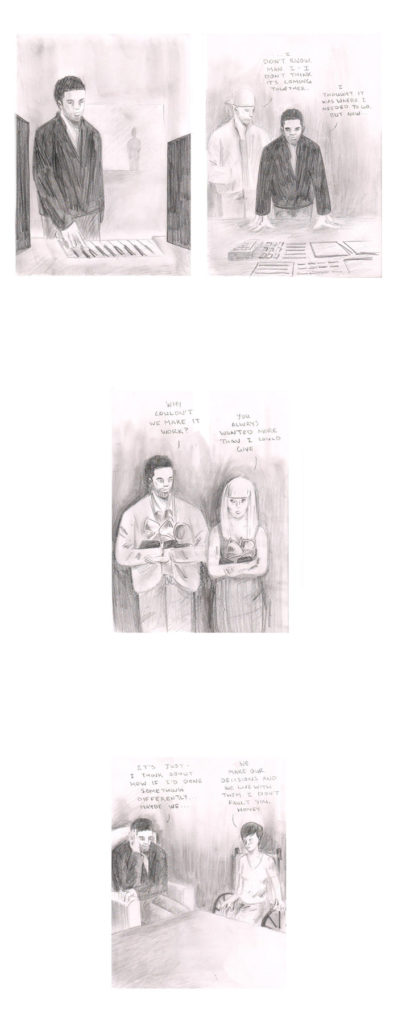
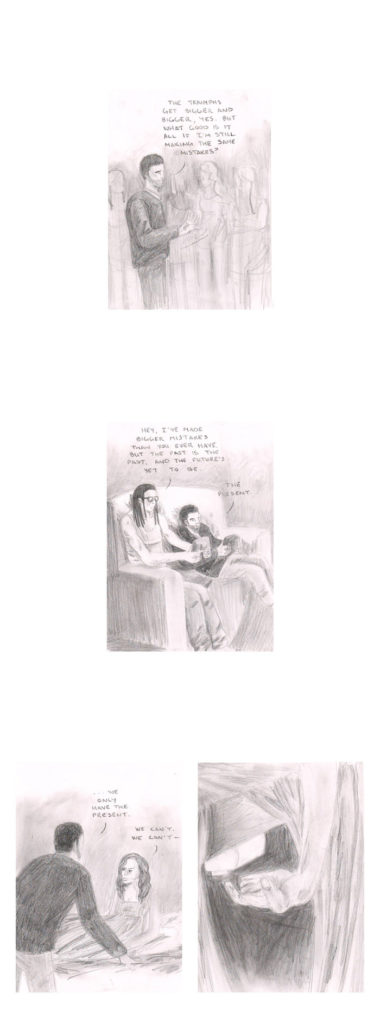



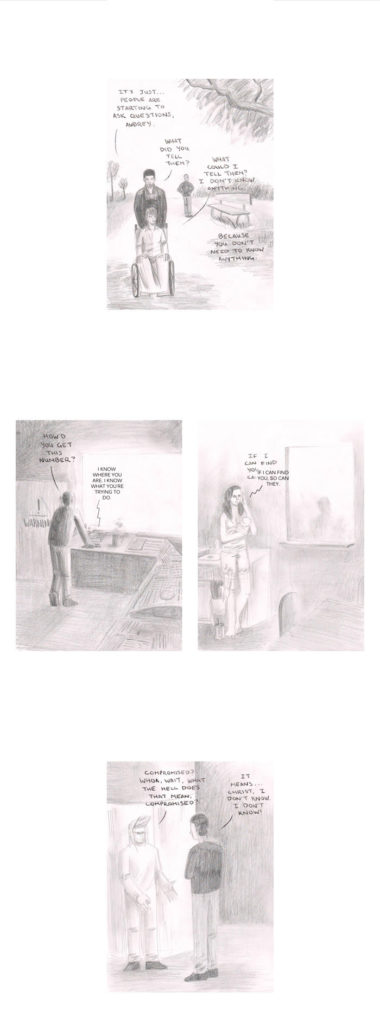
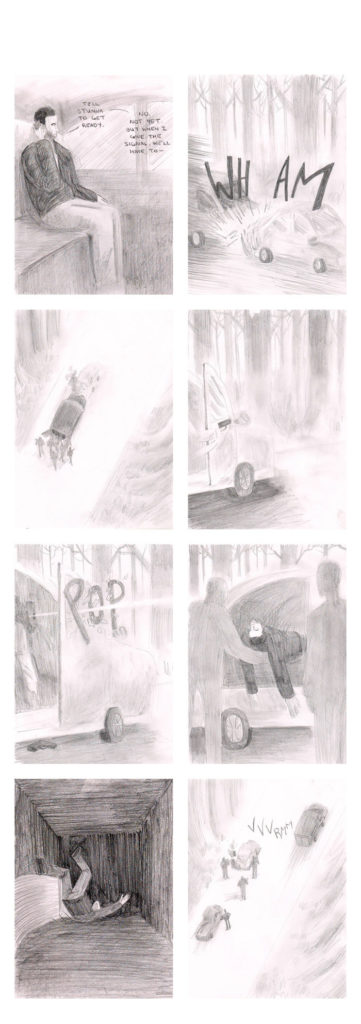

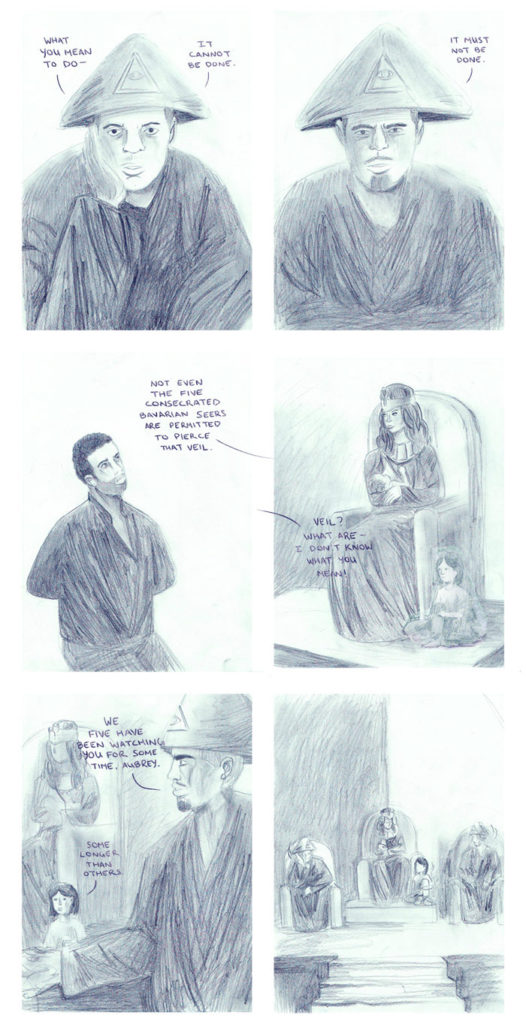
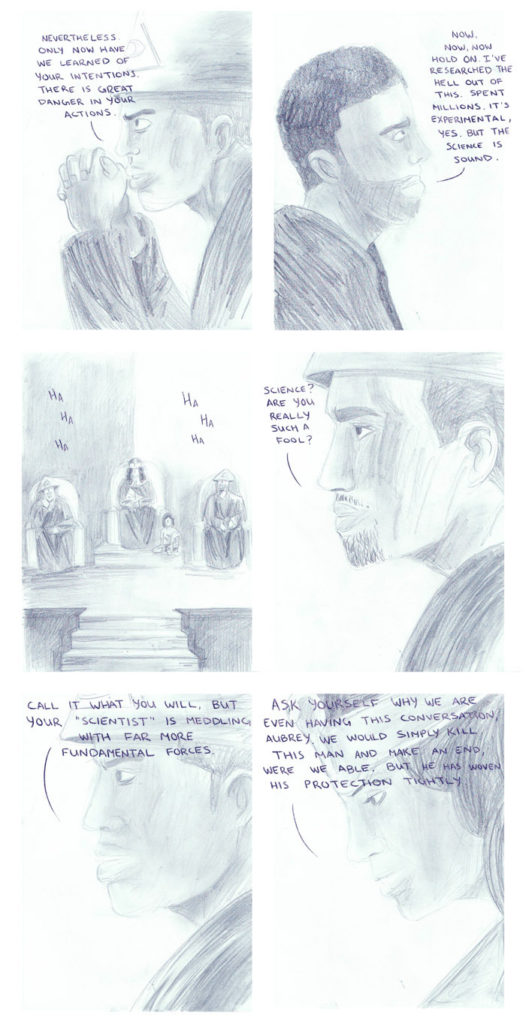
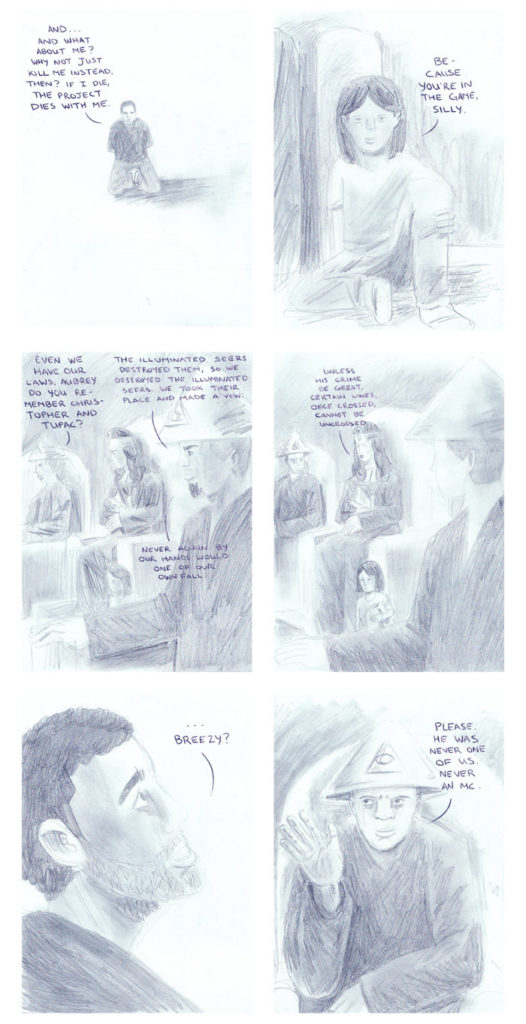
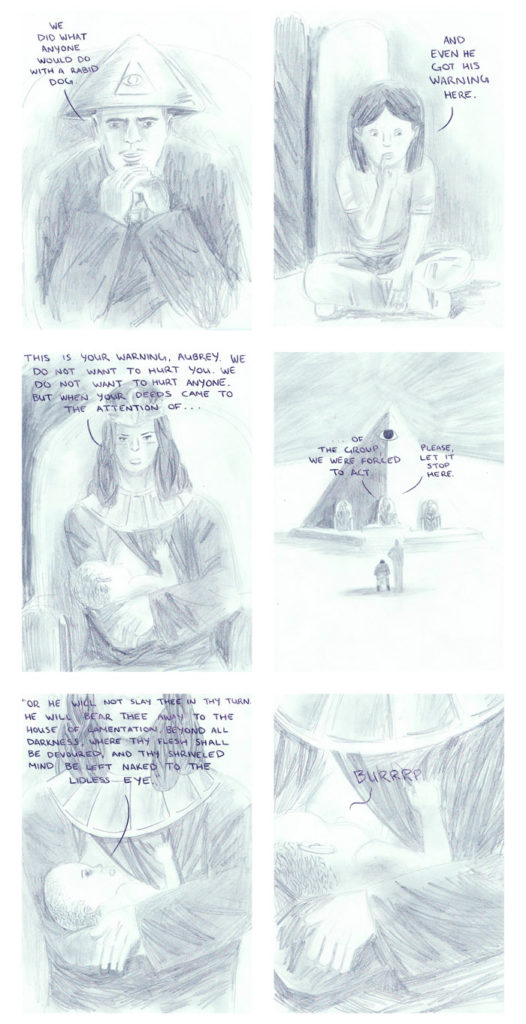
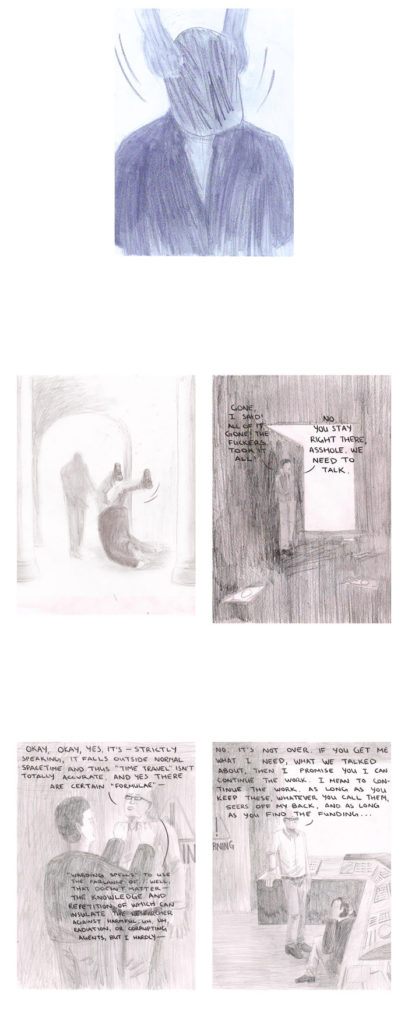

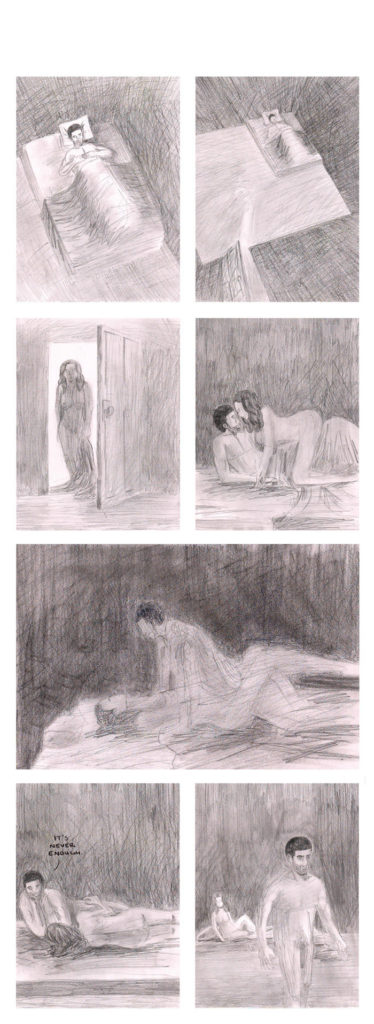
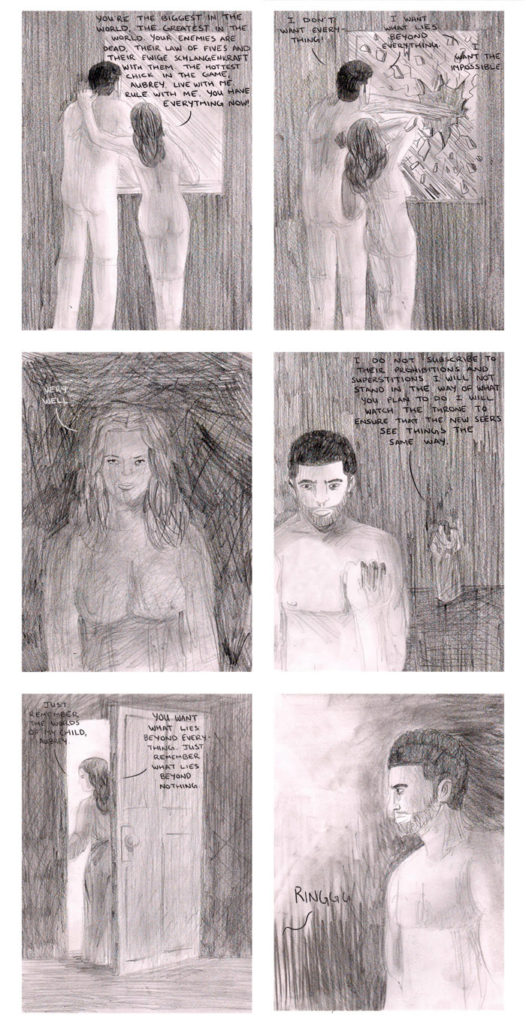
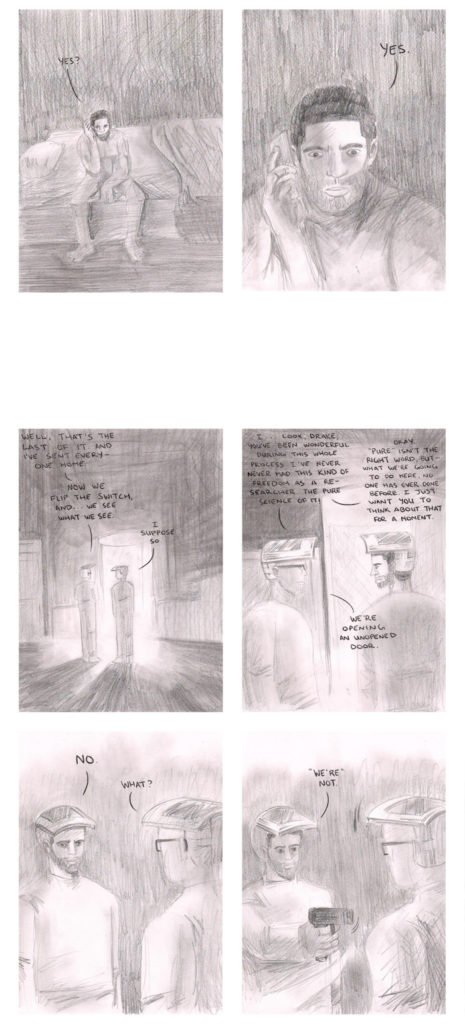
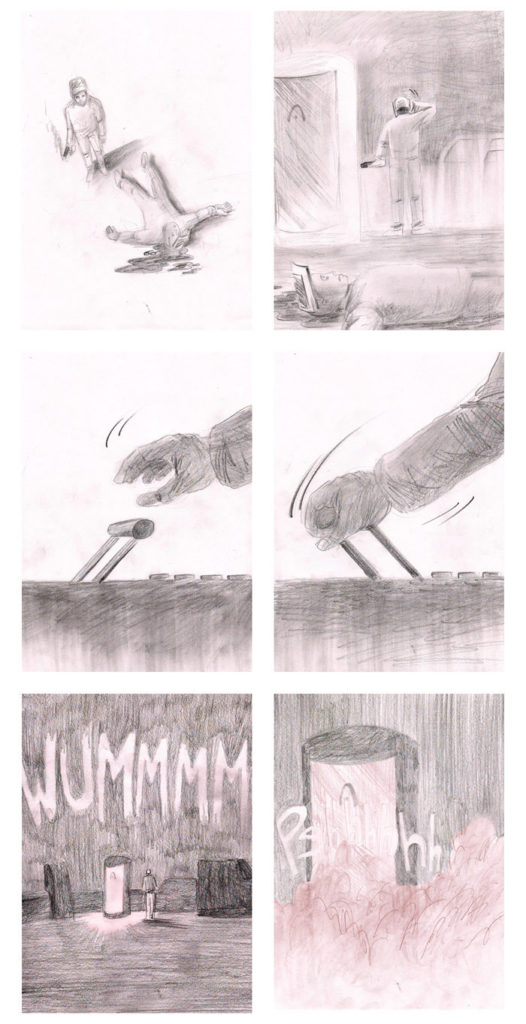
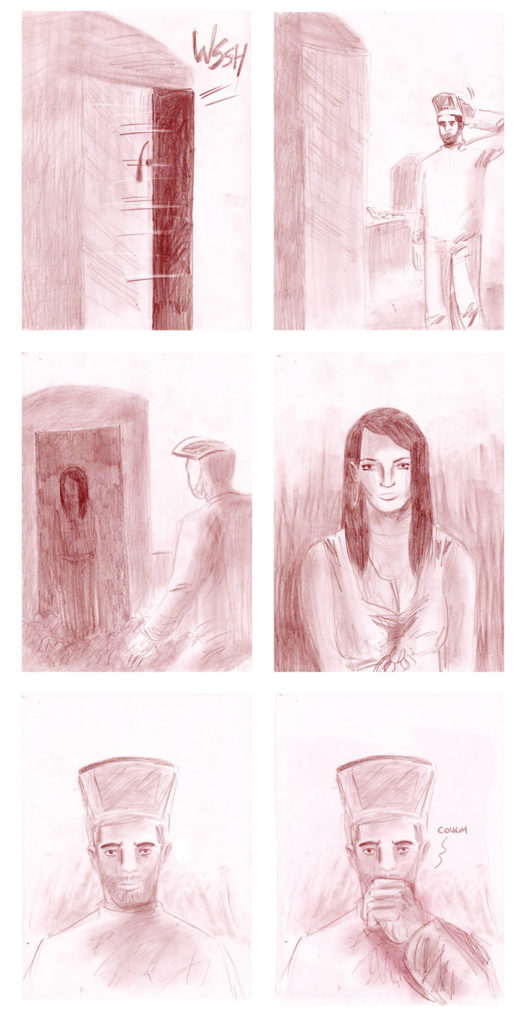
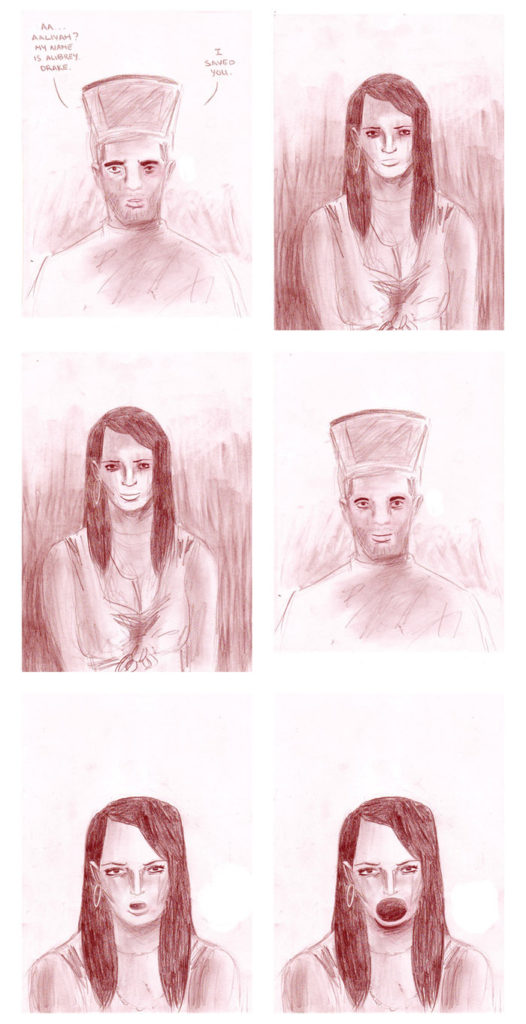
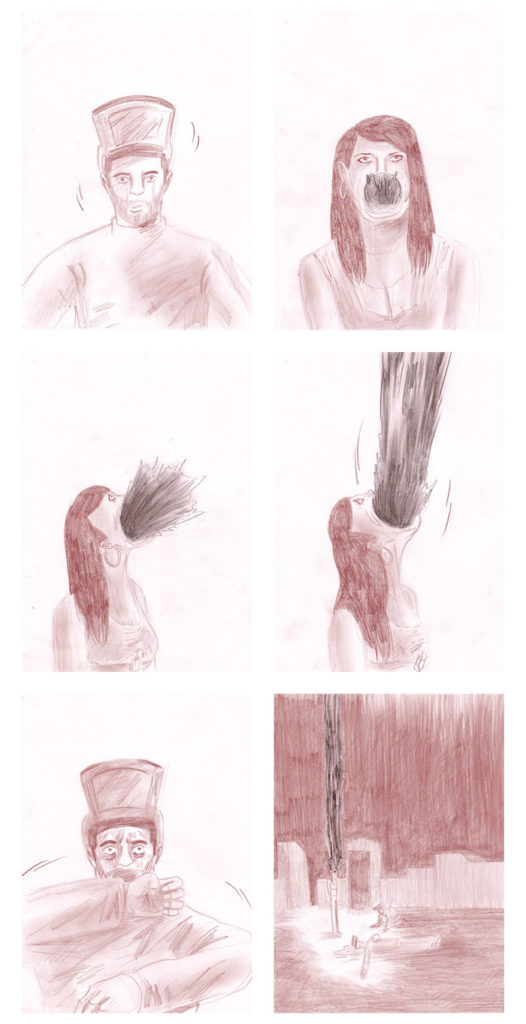

‘Watchmen’ Pulls the Hood on Hooded Justice
November 26, 2019SPOILER WARNING
Who was that masked man?
In this week’s episode of “Watchmen,” the show pulls back the hood on one of the story’s most elusive figures, the brutal vigilante called Hooded Justice. A peripheral but pivotal figure in the original graphic novel by Alan Moore and Dave Gibbons, Hooded Justice was the very first masked vigilante hero in the “Watchmen” universe, responsible for launching the phenomenon that inspired all the others to don masks of their own.
The big surprise? Underneath that hood and noose, so evocative of the Ku Klux Klan, was a black cop and survivor of the Tulsa Race Massacre, Will Reeves. Employing a mask and a rope that his racist fellow police officers had used to terrify and intimidate him, he turned the terror back onto criminals — including those crooked cops.
The revelation elevates a background player from the graphic novel to the status of protagonist, and in the process it raises as many questions as it answers. Does this surprising secret identity jibe with what we know from Moore and Gibbons’s original book? The showrunner Damon Lindelof — despite having made what he has called a “remix” of the book — claims to treat it as gospel. Could the racist iconography of Hooded Justice have been a ruse all along? We dug back into the source material to see if the case for a placing black man beneath that menacing hood holds up.
I unpacked the big twist on this week’s episode of Watchmen for the New York Times.
Memories of Tom Spurgeon
November 19, 2019I wrote about my friend Tom Spurgeon for the Comics Journal’s collection of eulogies. I miss him very much.
‘Watchmen’: Here’s What to Know From the Comics
October 18, 2019Where Does the TV Show Pick Up?
The show is set roughly 30 years later; during much of that time, Robert Redford has been president. Vigilantism remains banned except under official government auspices thanks to the Keene Act, a 1977 law named after Senator Joe Keene, whose charismatic son is now challenging Redford for the presidency. And Dr. Manhattan, who despite his near-omniscience was unable to stop Ozymandias’s plot, has fled the planet for Mars, where he has lived alone for decades.
Historically and psychically, the TV series roots itself in the 1921 riot in Tulsa, Okla., in which a white mob swarmed the prosperous black part of town, resulting in as many as 300 deaths, with thousands more displaced. In the fictionalized present day, the series pits the Tulsa police force, whose members wear vigilante-style masks to protect their identity, against a militant white supremacist group called the Seventh Kavalry, which has adopted Rorschach’s lethal methods and black-and-white mask.
The Complete History of the Joker
October 1, 2019The Joker debuted in Batman #1, the Spring 1940 launch of the Dark Knight’s dedicated comic-book series; it also revealed the superhero’s origin for the first time and contained the first appearance of Catwoman. (Batman first appeared in a separate series, Detective Comics, which gave DC Comics its name and in which he still stars to this day.)
But the creation of the Clown Prince is shrouded in controversy, with the three men involved — writer Bill Finger and artists Bob Kane and Jerry Robinson — each offering a different account of how the Joker came to be. The exact order of events varies depending on who you believe, but in essence, the character was a hybrid of influences. Robinson produced a joker playing-card design. Finger provided inspiration in the form of a clown-face logo from Coney Island and, crucially, a picture of actor Conrad Veidt playing the disfigured, permanently grinning title character in the 1928 horror film The Man Who Laughs. Both Robinson and Kane, who for decades received sole credit for the creation of Batman, designed the character on the page, while Robinson and Finger helped develop the concept of the Joker as Batman’s nemesis. The result was a villain unlike any of the gangsters and mad scientists Batman and his recently added sidekick Robin had ever faced before.
I compiled the history of the Joker for Rolling Stone. I love these assignments because, in a culture that treats corporations and brands as creators, they’re a chance to give credit where it’s really due. (Yes, even to Bob Kane.)
“‘Best’ Is a Bullshit Word”: Phoebe Gloeckner on Editing “The Best American Comics 2018″
January 1, 2019To get deep in the weeds a bit, when you’re selecting the best comics—
Okay, get rid of that word. Get rid of that word, because it’s not possible. OK, yeah, you’re choosing the “supposed best” or “so-called best comics,” right, yeah?
Mmhmm.
What is your responsibility to your readership? What do you think when you’re possessing them? Well, I don’t fucking know. [Collins laughs.] No, honestly! I’m not thinking I’m choosing the best because I know I am the filter. What matters to me is, Do I like it? Did I like it more than a number of other comics? If the answer is yes, maybe I’ll include it, because what else do I have?
It’s like grading student work, in that you’re looking for so many things. You’re looking for: Can they draw, can they write, is it working together? Then you think, Well, I’ve known this student for two years. Look at them two years ago and look at them now. God, they are so good, and they are so much better than they were. They’re really trying hard and they’re really actually finding out what they can do. They might not be your best student to someone looking in from the outside. But sometimes you get these students who are great coming in, but because they can draw so well they have no real way to push themselves. You can see that they’re stuck. Their stories are a little weaker. Any criticism you give them, they halfway don’t believe it, or get pissed because they know they’re good. And they are, but they get this attitude and they don’t really get better.
So on the outside you can say “That person deserves an A”—the person with all the talent—and the one who tries so hard and gets so much better and will continue to do so, from the outside you might think “That’s C work.” In reality, you’re looking at so many things that other people who might not be inside this classroom wouldn’t take into consideration.
It’s the same when you’re looking at all this work. Because we’re individuals, we tend to like certain things or be interested in certain things, not in others. You try hard to put that aside, but you can’t. You can’t get out of your own skin. In the end, you’re going to choose things you like for reasons you don’t even understand.
Are you asking me, Do I feel any responsibility towards the reader? Or if my role is, in a very dry and responsible sense, to present only the finest? I mean, what are you trying to ask?
Well, for example, a couple of years I was hired to write a piece on “The 33 Greatest Graphic Novels of All Time.” Immediately, I said to myself “This is going to be my list of the 33 greatest graphic novels of all time, not a survey of the major landmarks from each genre and tradition and geographical region. You can get that anywhere, but you can only get this from me.” How do you draw the distinction between the quote-unquote “best” and stuff that you, based on your own interests as a reader, as an artist, as a person, as a teacher, whatever, like the best?
This is different in that I wasn’t asked to choose my all-time best stories or favorite stories. It was just my favorites among those that were sent, submitted, or solicited at this particular period of time. In that sense, it is harder to impose your own tastes and preferences on the group. You didn’t direct yourself towards a certain group of comics, they’re just placed in front of you.
I went into it thinking—and Bill Kartalopoulos said—“It’s your favorite from this period.” He kept emphasizing, “You’re the one who’s choosing which ones will go in the book.” If we had been asked to honor the accepted greatest cartoonist or the best-selling up-and-comers, I mean, that would’ve been really different. Publicly that may have been more recognized as, this is good, this is bad, but it wasn’t like that at all. They always have a different guest editor because it’s understood that different tastes will be reflected depending on who’s judging the work.
Bill, in his foreword, says his task is different than the guest editors in that he’s seeing all the submissions and whittling them down to a broad range of suggestions, but one that’s still smaller than the overall submission group. As much as he stands by his personal taste and feels it’s informed and defensible, he puts it aside as he’s looking at work in genres or tones that he’s usually not interested in. He thinks to himself, Okay, well, this may not be my thing, but it’s a thing. Is it a really good example of that thing? Is it an ideal version of that thing? Is it doing something new with that thing?
Right, but he also admitted that he constantly chose things he thought I might like. I always thought, What exactly does that mean? I actually do like lots of things, so I wasn’t sure what he meant by that.
But with all those questions—is it doing something groundbreaking, is it really the best example of this type of thing in any particular year—even the most prolific artists aren’t vomiting up stuff at a fast clip relative to other forms of communication. What are the chances you’re actually going to get work that fulfills all those criteria? Sometimes, you’ll get really brilliant shining examples you can hold up and say No doubt, this is best, everyone will agree. Sometimes you’re getting a book that is better than others, but nevertheless this particular artist did a book that you liked far better two years ago. Yet you’re going to include this because it’s actually something you can say you admire more than you appreciated fifty other books that were also submitted. You’re not always going to get that many outstanding pieces of work, even from the best artist. If you look at a body of work you’re always going to have a preference for this period or this story or this book over another, even in one artist’s work. “Best” is a bullshit word. Nobody’s ever going to agree on it.
Stan Lee: ‘The Man’ Behind the Comic-Book Superhero Myths
December 31, 2018If the Man gave Marvel its persona, he also created his own. Born Stanley Martin Lieber in 1922, he adopted his pen name in part because he held out hope of becoming a serious writer under his real name. Meanwhile, he was cranking out comics of every kind for his uncle Martin Goodman’s publishing company, which eventually evolved into Marvel. That name and everything that came with it — the jocular personality, the never-changing look, the vague but unmistakable air of creative wizardry — was as grand an identity as any superhero’s.
Of course, he had a secret identity too. He was a hopelessly devoted husband to his wife Joan, a British ex-pat whose death in 2017 seemed impossible for Lee to ever truly wrap his mind around. And as recent exposés and interviews have illustrated, he was subject to the same depredations of age as any other person — confusing legal disputes with business partners, elder-abuse allegations — a sad coda to a life lived large.
And he was Stan the Company Man as well. Ask the late Jack Kirby, the creative dynamo (he helped invent both Captain America and romance comics with writer Joe Simon, long before he and Lee teamed up), who by all accounts did much of the heavy lifting not just as artist but as co-writer during their fruitful collaboration, despite Lee earning the lion’s share of the credit and compensation. Kirby’s legacy as “The King of Comics” includes a lengthy legal war against Marvel for rights, royalties, and even the physical pages he drew on. Though Lee assiduously pointed out the role his collaborators played in the formation of the company and its characters during interviews later in his life, he usually took Marvel’s side in these battles when they occurred. To many within comics, “The Man” has the same pejorative connotations it does when used to describe politicians or police.
But whatever his faults (many) and autumn-years misfortunes (also many), Lee’s ambition, imagination, and ability to combine high melodrama, high-octane action and playful, personable banter on the comics page was the foundation upon which the entire Marvel empire was built. And most importantly, long before his characters ruled the box office, they populated the back pockets and bedroom floors of countless kids, thirsty for adventure and desperate for connection. Peter Parker, Tony Stark, T’Challa, Natasha and the rest of the gang brought incalculable hours of enjoyment to their readers, and eventually their viewers. All of it based on Lee’s basic premise, reflected in his own life in so many ways, that radioactive spider bites or not, heroes are only human.
Without Stan Lee, it would be a poorer, lonelier, drearier life, in which picked-on kids would dream fewer dreams. Forget the Marvel Universe. Stan the Man reimagined our own.
After his death, I wrote about Stan Lee for Rolling Stone. I tried to be specific and fair about his faults and achievements.
‘Venom’: Everything You Need to Know About the Marvel Antihero
October 13, 2018Before he was a character, Venom was a costume.
Imagine if the Joker started out as a clown outfit that Batman wore for circus-themed missions and you’ll have some idea of just how odd the path that this character took to antihero superstardom really was.
Back in 1982, comics reader Randy Schueller submitted an idea to Marvel for a storyline in which Spider-Man acquired a black costume (with a red spider logo, rather than the familiar white one) made of “unstable molecules,” i.e. the Marvel Universe material from which the Fantastic Four’s Reed Richards made his team’s uniforms. More than mere fabric, this outfit would be able to adjust to Peter Parker’s needs, as well as enhance his powers. Controversial Marvel editor-in-chief Jim Shooter bought the idea from Schueller for a cool $220.
It took a couple of years for the new white-on-black look to make its first chronological appearance in the pages of the company-wide crossover “event comic” Secret Wars #8, courtesy of a design by artist Mike Zeck and a script by Shooter that saw the Webslinger acquire the costume on an alien planet.
Though the issue came out in December 1984, the costume had popped up several months earlier — first as a sketch in March’s comic-length newsletter Marvel Age #12, then in a Spidey story set after the events of Secret Wars in May’s Amazing Spider-Man #252, plotted by Roger Stern, written by Tom DeFalco, and illustrated by Ron Frenz.
… And also an alien parasite.
During their Amazing Spider-Man run, DeFalco and Frenz fleshed out the origin of the liquid-like black outfit, which would respond to Peter Parker’s thoughts; it would even hijack him in his sleep for late-night crimefighting binges. Sure, it looks badass, but it’s not merely a futuristic crimefighting costume or the self-repairing clothes writer/artist John Byrne had devised for the martial-arts hero Iron Fist (an influence on Stern’s concept for the costume). It’s a sentient, symbiotic alien entity, one which bonds to a human host and bestows them with incredible powers while still maintaining a mind of its own.
That “mind of its own” thing is the rub. Though he digs the power-up, Parker quickly learns that this “Symbiote” wants to bond to his body permanently. By exploiting the alien’s vulnerability to fire and sonic energy — and with a little help from the Fantastic Four — Spider-Man separates himself from the costume, which slithers off to find another host to inhabit.
I wrote a quick cheat sheet to catch people up on the history of Venom in comics and film, just in time for the new Tom Hardy movie, for Rolling Stone. I like doing pieces like this because it’s a way to give some shine to the writers and artists who made this multibillion-dollar industry possible.
Robert de Niro already starred in a near-perfect Joker movie
October 1, 2018Better to be a king for a night than a schmuck for a lifetime!
—Rupert Pupkin, The King of ComedyLaugh and the world laughs with you!
—The Joker, Arkham Asylum: A Serious House on Serious EarthStop me if you’ve heard this one before: Robert de Niro will soon co-star in a film about a deranged man who fancies himself a comedian and is driven to crime by a late-night talk show host.
This time around, however, de Niro isn’t playing the insane up-and-comer, as he did in Martin Scorsese’s 1982 black comedy classic, The King of Comedy. Rather, rumor has it, Bobby D will be the superstar who spurs Joaquin Phoenix’s descent into madness in director Todd Phillips’ stand-alone movie about the Joker, nemesis of Batman and anyone taking Jared Leto seriously alike.
That distinctive chemical odor you’re smelling isn’t Smilex gas, but an air of superfluousness surrounding the whole project. The movie exists in parallel to the DC film universe, where Leto remains attached to both a Suicide Squad sequel (where his take on the character debuted) and in his own stand-alone Joker movie. Nor is it simply that the work of Martin Scorsese is cited as an inspiration anytime Phillips’ movie pops up in the trades. To an extent, that stands to reason: Scorsese is the film’s executive producer, and his signature star is in the cast. “Grim and gritty,” Taxi Driver, ’70s/’80s noir — word on the street, including what Polygon has heard from crew members, is that the Joker movie is an extended Marty homage.
Here’s the thing: The King of Comedy already is a near-perfect Joker movie. (It’s a near-perfect movie in general, but it’s a Joker-specific one, too.) It’s a glimpse into the mind of a man who’s convinced, despite all evidence to the contrary, that he’s one of the funniest people in the world, and who’s determined that the world must be made in on the joke. Beneath the purple suit, green hair and greasepaint-white skin, that’s what makes the Joker tick.
I’d like to thank Joaquin Phoenix’s upcoming Joker movie for giving me the excuse to write at length about Martin Scorsese’s The King of Comedy for Polygon. Guest stars include Robert De Niro, Sandra Bernhard, Jerry Lewis, the Clash, Grant Morrison & Dave McKean, Alan Moore & Brian Bolland, Frank Miller, and a lengthy encomium to Jack Nicholson’s Joker in the first Tim Burton Batman movie. Rupert Pupkin, ladies and gentlemen!
Superheroes Onscreen: The Evolution of an American Ideal
July 23, 2018The Dream Machine: ‘Superman: The Movie’ (1978)
Where to watch: Rent it on iTunes, Amazon or YouTube
The machinery of the modern-day blockbuster — kick-started by Steven Spielberg’s “Jaws” and thrown into high gear by George Lucas’s “Star Wars” — never operated in a more chaotic, or mercenary, fashion than it did in this big-budget work of art-by-committee. There was its small army of screenwriters, credited and uncredited (including the author of “Godfather,” Mario Puzo); the decision to shoot the film and its sequel simultaneously in order to increase the return on investment; the fortune thrown at Marlon Brando for just a few minutes of screen time as Superman’s Kryptonian father; the conflicts between director Richard Donner and his producers that led to his ouster before the sequel was completed (Richard Lester stepped in): All in all, the process was as industrial as building a car.
But all that fades away the moment the movie begins. The visual effects, most notably the Zoptic front-projection system that made Superman’s flight convincing, won an Oscar. The star-studded supporting cast, with Margot Kidder as a vivacious Lois Lane, Brando as Jor-El and Gene Hackman as Lex Luthor, gave the thing gravitas. Finally, there’s Superman himself: Christopher Reeve, in a performance so effortlessly charming yet rooted in thoughtful physicality, it forever associated him with the role. His instantaneous change in posture and expression when he switches between Superman and Clark Kent remains a wonder to behold.
The Reaganomicon: ‘RoboCop’ (1987)
Where to watch: Stream it on DirecTV Now or IFC; rent it from iTunes, Amazon or YouTube
Despite the success of “Superman” and its even better sequel, “Superman II,” the standard superhero seemed a little superfluous in the 1980s. With President Ronald Reagan telling tales of good versus evil straight out of a comic book, and action stars like Arnold Schwarzenegger and Bruce Willis sculpting their physiques to cartoon-worthy levels, who needed spandex?
Enter “RoboCop,” the sci-fi satirist Paul Verhoeven’s biting black comedy in ultraviolent action-hero drag. In a dystopian future where hospitals are driven by profit and police departments use military-grade weaponry — imagine all that! — a badly-wounded rookie cop (played by the unlikely action star Peter Weller) is fitted by a creepy corporation with cybernetic enhancements that increase his lethality but wipe out his memory. The story of a super-cop literally fighting against his own programming in order to reclaim his humanity — in a city being stripped for parts by the superrich — is as poignant now as it was in Reagan’s America.
Blockbuster Begins: ‘Batman’ (1989)
Where to watch: Rent it on iTunes, Amazon or YouTube
Almost as soon as the TV show “Batman” went off the air, darker material began to ferment in the comic-book depictions of the Caped Crusader and his peers. “Batman” was the blockbuster that brought this grimmer vision roaring into multiplexes and the mainstream consciousness. Directed with confident neo-noir style by Tim Burton, the movie pivoted off works like the cartoonist Frank Miller’s “The Dark Knight Returns” and employed an array of talent — the composer Danny Elfman; the production designer Anton Furst; and Michael Keaton and Jack Nicholson as Batman and his psychopathic nemesis, the Joker — working at or near their career peaks.
While “Batman” remains one of the genre’s best films (the best, if you want my opinion), its industry innovations sometimes overshadow its aesthetic excellence. The movie’s PG-13 rating became standard for tent-pole movies, while its record-breaking box office enshrined opening-weekend revenue as a key measurement of a film’s success. “Batman” was an inescapable last gasp of Big ’80s monoculture; that summer, the bat symbol was nearly as ubiquitous as Coca-Cola.
I’m really glad my editors at the New York Times talked me into writing a cultural history of superheroes on film and television, touching on changing mores, aesthetics, technology, showbiz, and American society in general. I’m very proud of how this piece turned out, especially of the effort we made to give proper credit to the characters’ original creators. And there’s links to where you can watch every single movie and show on the list online!
‘Cloak and Dagger’: Everything You Need to Know About Marvel’s New TV Superheroes
June 5, 2018Bill Mantlo’s versatile writing and Ed Hannigan’s expressive art helped these au courant characters make a strong first impression. The two collaborated on the pair’s design in particular, and the results speak for themselves, from the swirling void of Ty’s dark cloak to the daring dagger-shaped décolletage of Tandy’s bodysuit. Not to mention that the color contrast between the characters’ costumes are a bit like if the black-and-white outfits that artist John Romita Sr. designed for fearsome figures like the Punisher or Bullseye had been split into two people. The look also anticipated artist Mike Zeck’s design for Spider-Man’s black costume and its eventual incarnation as Venom a few years later.
C&D earned their own mini-series in 1983 and an ongoing comic two years later, both illustrated by Rick Leonardi. But despite, or perhaps because of, their combination of two of the era’s biggest trends – teen teams and “good guys” who aren’t afraid to get their hands dirty – they never wound up hitting the heights of other anti-heroes. Still, the strength of the design, and the mixed-up-kids-bound-by-fate concept, kept them from fading from the spotlight completely.
Sadly, both Mantlo and Hannigan have suffered debilitating health crises: Mantlo was permanently incapacitated after being struck by a hit-and-run driver in 1992, while Hannigan suffers from multiple sclerosis. Despite the strength of their creation, the financial struggles endemic in the dog-eat-dog comics industry have made them causes célèbres for fans and charities alike.
Julia Gfrörer: A Void Does Not Exist
February 13, 2018The 207th meeting of the NY Comics & Picture-story Symposium will be held on Tuesday, Feb. 13, 2018 at 7pm at Parsons School of Design, Kellen Auditorium (Room N101), Sheila C. Johnson Design Center. 66 Fifth Avenue (off the lobby). Free and open to the public.
Julia Gfrorer on “A Void Does Not Exist.”
Gfrorer discusses the effect of leaving negative space in a work and how useful a tool it can be for controlling the emotional tenor of a story. People have an instinctive dread of emptiness (“horror vacui,” “nequaquam vacuum,” “nature abhors a vacuum”) which means as creators we tend to avoid it, but for a reader it can also be soothing, hypnotic, sensuous, and magnetic. A void isn’t necessarily a “nothingness”: something happens because of it. She will give examples from her own work as well as work that’s influenced her.
Julia Gfrörer is a writer and cartoonist. She graduated from Cornish College of the Arts in Seattle, WA, and now lives on Long Island. She has published several handmade comics under her own imprint, as well as two longer graphic novels, Laid Waste and Black Is the Color, with Fantagraphics, a leading independent comics publisher. Her work has also appeared in numerous anthologies and publications, including Cicada Magazine, Arthur Magazine, Kramers Ergot 9, and two volumes of Best American Comics. She recently translated and illustrated excerpts from a medieval French heraldic text for 2dCloud’s MIRROR MIRROR II anthology, which she co-edited with her partner, writer Sean T. Collins.
This starts in like 20 minutes! If you hustle you can make it, NYC!
The Beat’s Best Comics of 2017
January 14, 2018“In a year that many have found bleak and depressing, Mirror Mirror II managed to channel this energy into one of the most riveting visual experiences of the year….the best horror comics anthology available.” —Phillippe Leblanc
“This book should win all the design awards for 2017. It’s as magnificent as the contents are (purposely) horrific.” —Heidi MacDonald
I’m honored to that Mirror Mirror II made the Beat’s Best Comics of 2017 list twice over, once courtesy of Phillippe Leblan and again via Heidi MacDonald. Perpetually grateful and glad so see this book reaching people. Buy it here.
Rob M’s Favorite Anthologies of 2017
January 7, 2018Mirror, Mirror II, edited by Sean T Collins and Julia Gfrorer, published by 2D Cloud
I’m not going to lie, this one really messed with me. If I were listing comics that challenged me the most in 2017 (which Alex Hoffman has done in the past), this would have been number one with a bullet. I wasn’t sure what to think when I first finished it. Did I like it? Is it the kind of anthology that can be liked? Collins and Gfrörer push to the very edge without going over it, with stories that show the strong link between eroticism and horror. It’s really unlike anything I’ve ever read.
Rob McGonigal named Mirror Mirror II one of his favorite anthologies of the year at Panel Patter. Can’t beat a lede like that.
The Annual Publishers Weekly Graphic Novel Critics Poll
December 29, 2017I’m pleased to learn that Mirror Mirror II, the comics anthology I co-edited with Julia Gfrörer for 2dcloud, has made the Honorable Mentions for PW’s annual graphic novel critics poll! If you want to see what it’s all about, buy it here or at the retailer of your choice.
The 10 Best Comics of 2017
December 22, 2017MIRROR MIRROR II edited by Sean T. Collins & Julia Gfrörer
Darkness is as intimate as a caress and as distant as history in this chilling anthology of horror comics….This collection doesn’t just feel haunting; it feels corrosive.
Mirror Mirror II, the comics and art anthology I co-edited with my partner Julia Gfrörer ( @doopliss ), was named one of the 10 Best Comics of the Year by The Verge. As always, I’m so pleased to learn how this book has reached people.

